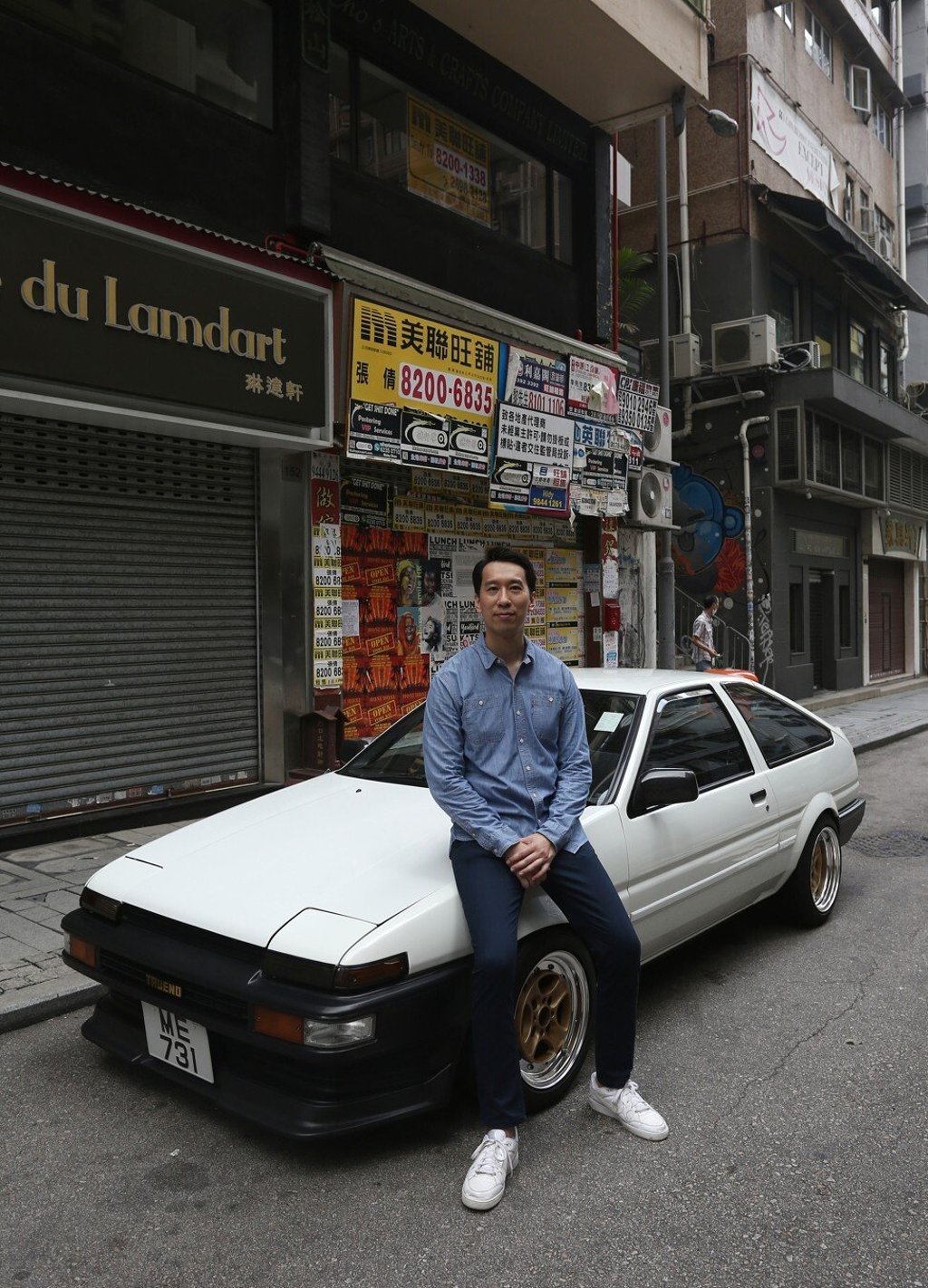Fast, not furious: Hong Kong’s Toyota AE86 owners and drift kings
The Toyota AE86 might look like an unassuming 1980s hatchback, but the iconic car has inspired generations of drifters and petrolheads, who pay a premium for the once-affordable vehicle

I hear it before I see it, an insistent revving cutting through the 7am calm of Hollywood Road. At this hour, the historic Hong Kong street is the realm of street cleaners and the occasional dog walker, but, on this particular morning, appears a car at odds with Hong Kong’s usual ostentatious four-wheeled parade of Ferrari, Lamborghini, Maserati: it is a rumbling … purring … gleaming … Toyota.
The engine is cut, morning quiet resumes, and from the boxy, toy-car proportions of the white 1986 AE86 Trueno, unfolds the tall frame of Winson Chan, president of perhaps Hong Kong’s most unexpected motoring fraternity: the AE86 club.
To the uninitiated, this unassuming, angular hatchback might not look like much – perhaps not much more than a cut-rate DeLorean for 1980s nostalgics – but it has achieved international cult status for its contribution to the motorsport of “drifting” – an intentional and controlled back-wheel slide around a corner – thanks to the AE86’s role in long-running manga and anime series, Initial D, about tofu delivery driver-turned-street racer Takumi Fujiwara.
Although not DeLorean-level rare, relatively low production numbers meant that the once-affordable vehicle is now notoriously collectible, and subject to a so-called tofu tax, taking it from the realm of boy racers to obsessive petrolheads.

“I’ve never met, spoken to, or otherwise come across a casual AE owner,” claims one contributor to the Speedhunters web forum, and Winson fits that bill. He says there is a stigma to owning a car like an AE86 in the city. “One thing that is difficult for Hong Kong car culture is that when you have an iconic car, it’s seen as a crime, people think you’re out to race.”
Robert Chan, founder of Hong Kong-based Drift Academy, is all too familiar with this presumption. Like Winson, he got into driving while living in Australia, watching “very low-resolution Video CDs” of Japanese drifters, AE86s being the norm, in the days before YouTube. “When you do something to the extreme, it’s like an art,” he says. “I fell into it the way that people fall into music or oil painting.”